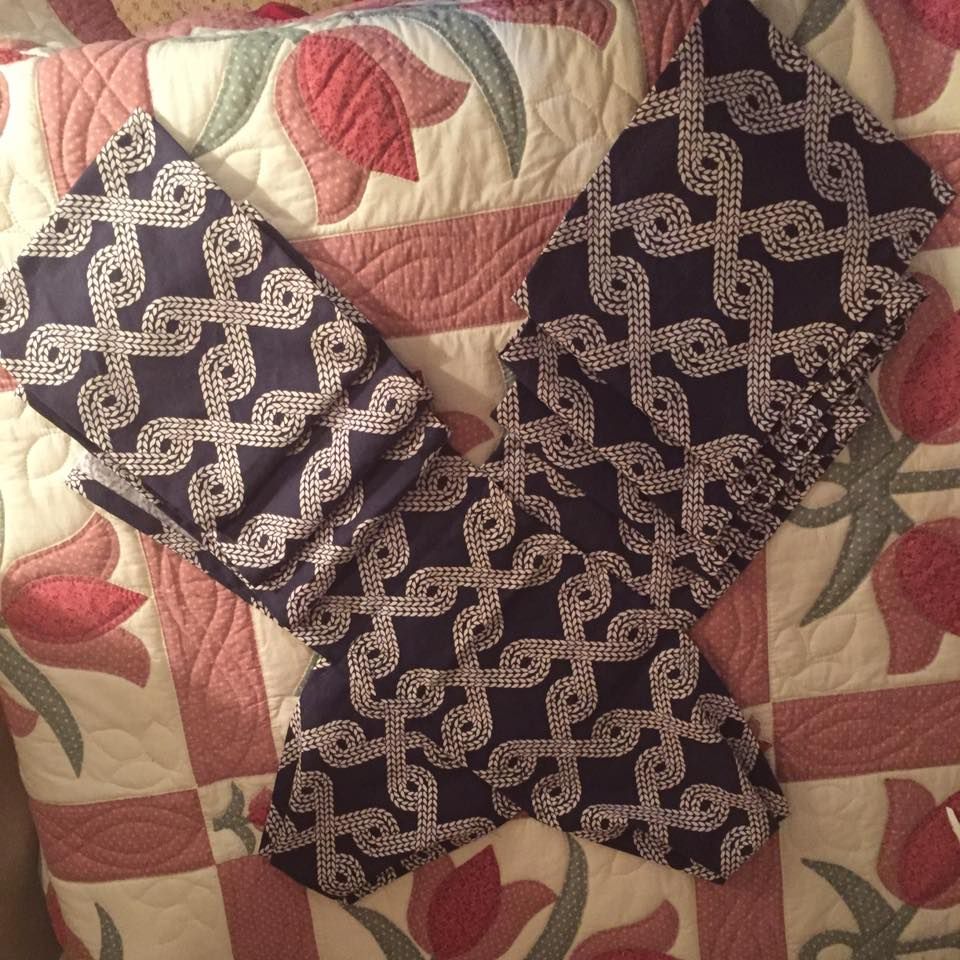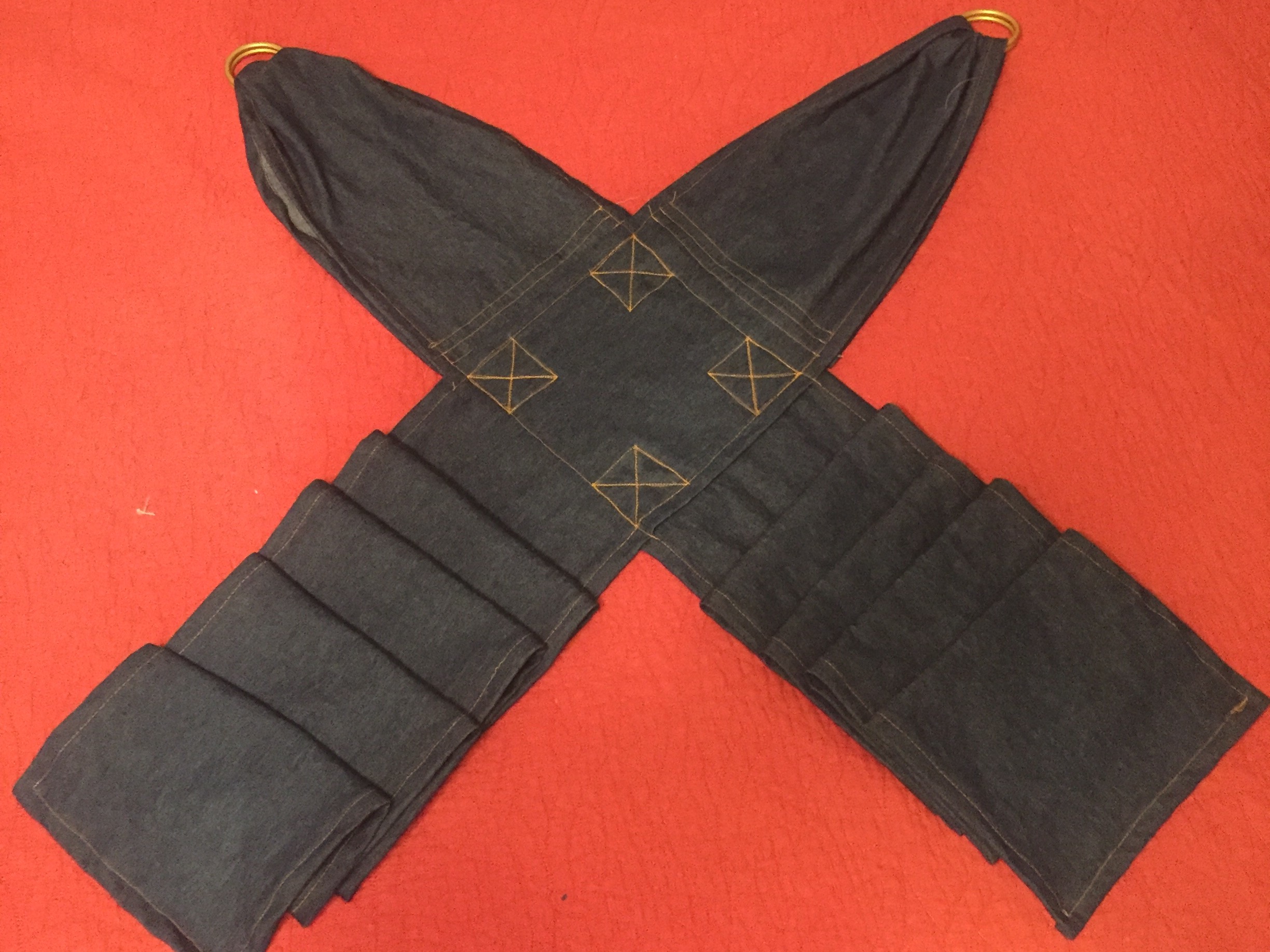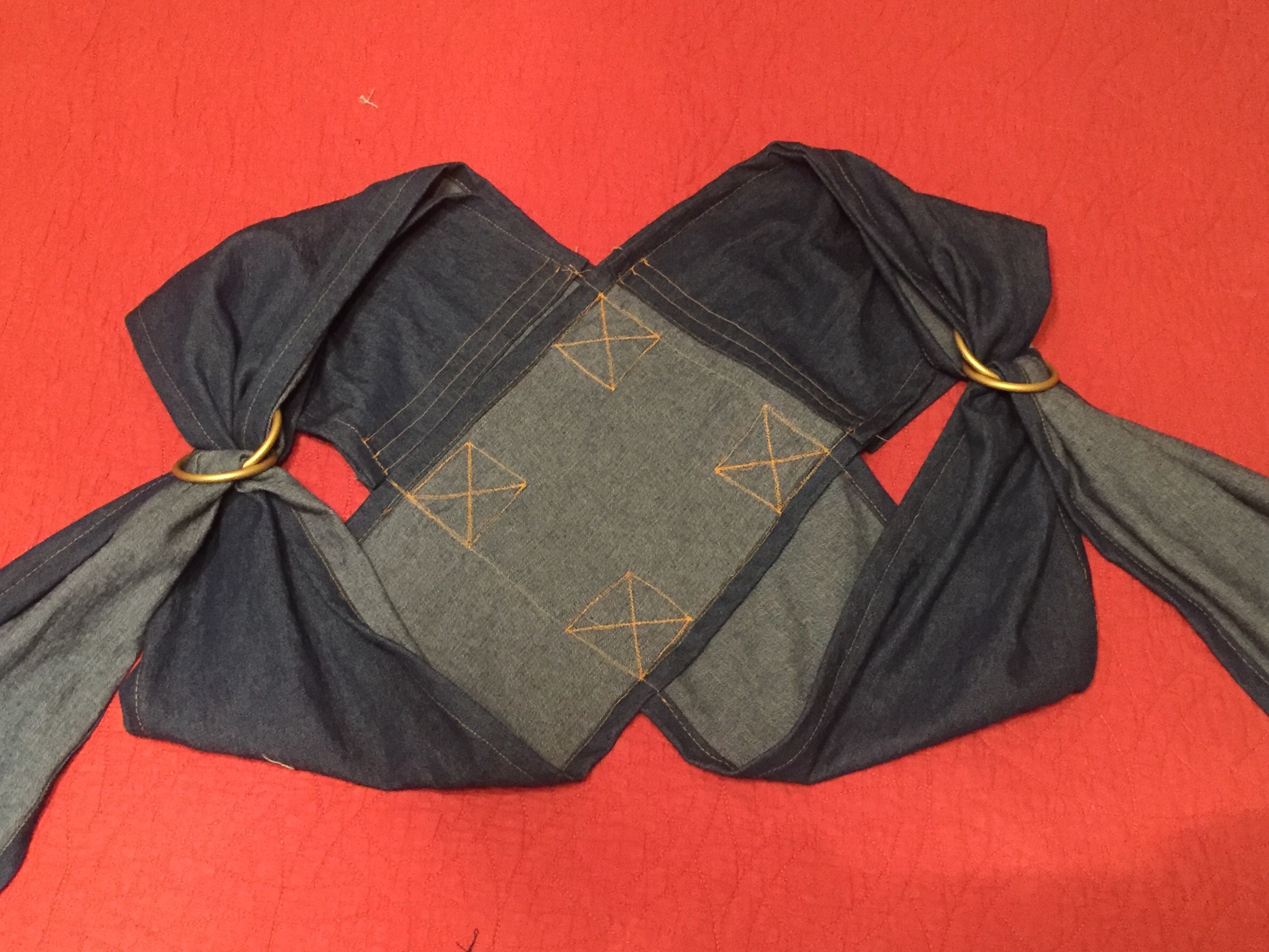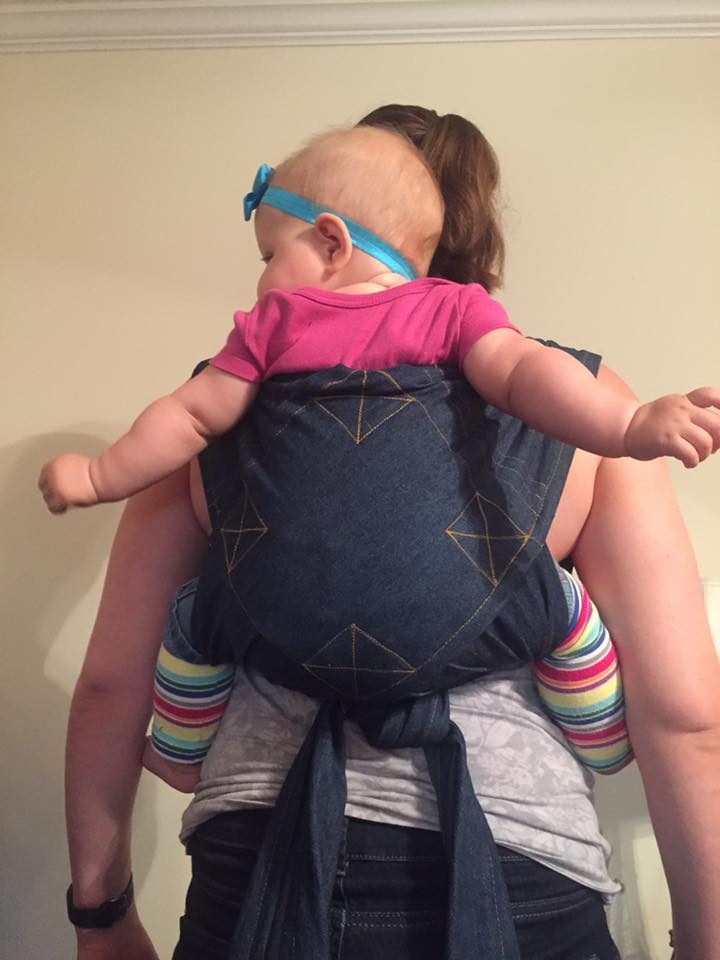| | | |
X-Onbuhimo Tutorial
What is an X-Onbuhimo?
Also referred to as: Blanketless Onbuhimo, Panel-less Onbuhimo, X-bu ( outdated, listed for clarification only)
An onbuhimo is a carrier of Japanese origin involving a rectangular body panel with a pair of either rings or fabric loops on the bottom corners and long straps coming out of the top corners. A reverse onbuhimo has a rectangular body panel with short, padded shoulder straps with double rings on the top corners, and long straps coming out of the bottom corners.
An x-onbuhimo (traditional or reverse) serves the same function as the above carriers, but with a minimalist design. They are quicker and easier to construct for a beginner sewer.
 |  |  |  |
| Traditional X-Onbuhimo with fabric loops | Reverse X-Onbuhimo | Reverse X-Onbuhimo Pre-threaded | Reverse X-Onbuhimo Baby's positioning on the overlap. |
Description
An onbuhimo is a carrier of Japanese origin involving a rectangular body panel with a pair of either rings or fabric loops on the bottom corners and long straps coming out of the top corners. A reverse onbuhimo has a rectangular body panel with short, padded shoulder straps with double rings on the top corners, and long straps coming out of the bottom corners.
An x-onbuhimo (traditional or reverse) serves the same function as the above carriers, but with a minimalist design. They are quicker and easier to construct for a beginner sewer.
Good For
- Front Carries: Not designed for front carries. Possible with long enough straps to cross in the back, add support with reinforcing passes over baby's bum and close off the open sides.
- Hip Carries: Not designed for hip carries.
- Back Carries: Babies who can sit independently only. Designed for arms-out wearing due to open sides.
- Forward Facing: Not designed for forward facing.
Advantages
Quick to put on and an unpoppable seat makes it easier to wear wiggly or difficult toddlers who may not have the patience for wrapping. Lack of waist belt is great for anybody who doesn't want the pressure on their waist, including (but not limited to) expectant mothers. Incredibly fast and easy to sew for beginners.Disadvantages
More limited than other carriers, since onbuhimos are really best for older, independently sitting babies and only designed for back carries. No padding and less flexibility means that this style of carrier can be less comfortable for longer wearing than a traditional body-panel-with-straps design. The Reverse X-Onbuhimo specifically can be extremely uncomfortable if the rings sit in the wrong spot on the front of the arms. There are a few tricks for pulling the pressure off of these rings, but if the straps are the wrong length so the rings end up in your armpits or on your collarbone, there is not much you can do for comfort.Variations
- Fabric loops: shoulder straps are threaded through simple fabric loops at the bottom corners
- Ring loops: shoulder straps are threaded through a single sling ring at the bottom corners.
- Reverse: Waist straps are threaded through double sling rings at the top corners.
Sizing
The strap width determines the "body panel" size (the area where the two straps overlap) and should be based on child's size. Baby needs to be able to fit in the carrier arms-out, but the panel must not be so low that baby can lean backwards. The width should be wide enough to support baby's legs from knee-pit to knee-pit, while still allowing the legs to swing freely at the knee. The strap length is determined by the wearer's size. Short straps can be used for a simple tie-off, where longer straps can offer additional supporting passes over baby's bum, Tibetan finishes in the front to take the pressure off the shoulders, or supporting passes in a front carry.How to Use
- High Back Carry with an Onbuhimo
- Wrap Strap Onbuhimo Back Carry
- How to thread an onbuhimo with fabric loops instead of rings
- How to Put On a Reverse Onbuhimo
- Achieving a high back carry with a reverse onbuhimo
- Reinforced tibetan tie off for reverse onbuhimo
- Tie Off Options for a Reverse Onbuhimo with Short Straps
Tutorials
- A downloadable PDF tutorial for a Traditional X-Onbuhimo with rings or fabric loops: xonbuhimo_basic.pdf
- A downloadable PDF tutorial for a Reverse X-Onbuhimo with double rings: xonbuhimo_reverse_basic.pdf
| I | Attachment | History | Action | Size | Date | Who | Comment |
|---|---|---|---|---|---|---|---|
| |
13227037_10100334989929734_6711750635986473247_n.jpg | r1 | manage | 53.1 K | 2017-03-30 - 03:18 | AlyssaLeonard | |
| |
13754567_10100366213168114_8210268611972125520_n.jpg | r1 | manage | 181.8 K | 2017-03-30 - 03:13 | AlyssaLeonard | |
| |
Photo_May_18_3_35_44_PM.jpg | r1 | manage | 854.8 K | 2017-03-30 - 03:13 | AlyssaLeonard | |
| |
Photo_May_18_3_37_38_PM.jpg | r1 | manage | 889.9 K | 2017-03-30 - 03:13 | AlyssaLeonard | |
| |
Photo_May_18_3_44_40_PM.jpg | r1 | manage | 1219.2 K | 2017-03-30 - 03:13 | AlyssaLeonard | |
| |
X_Bu_FAQ_and_Tutorial.pdf | r1 | manage | 366.9 K | 2016-12-22 - 03:05 | AlyssaLeonard | |
| |
xonbuhimo_basic.pdf | r2 r1 | manage | 46.0 K | 2018-01-06 - 00:36 | AlyssaLeonard | |
| |
xonbuhimo_reverse_basic.pdf | r2 r1 | manage | 46.6 K | 2018-01-06 - 00:36 | AlyssaLeonard |
This topic: Main > WebHome > XOnbuhimo
Topic revision: r4 - 2018-01-06 - AlyssaLeonard
Ideas, requests, problems regarding TWiki? Send feedback



